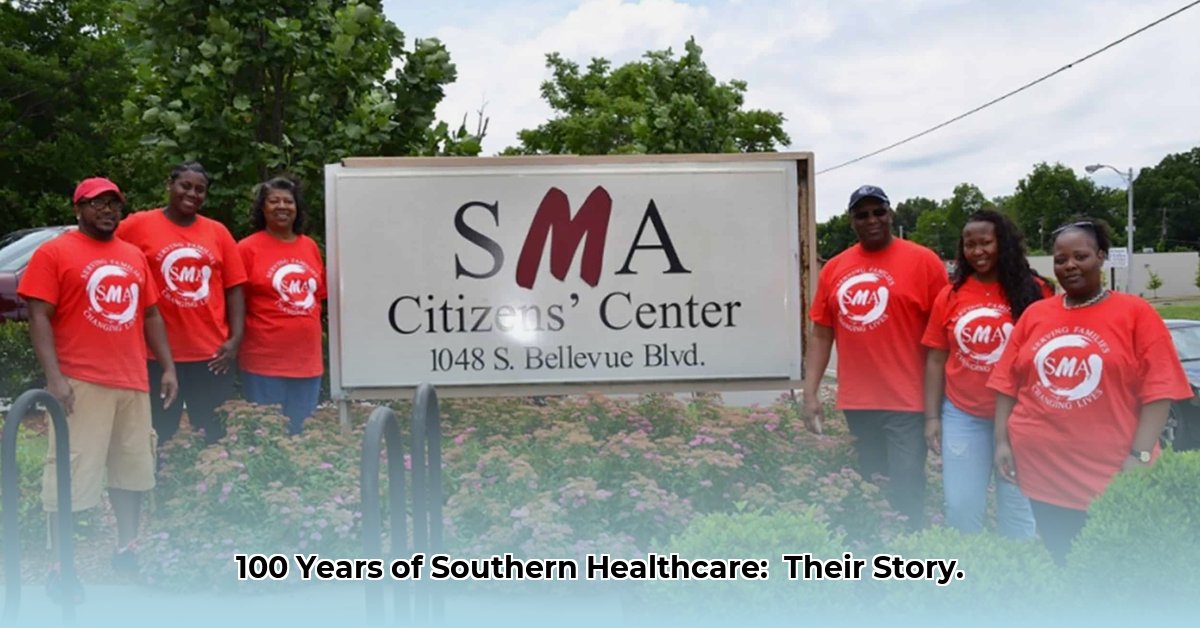
The Southern Medical Association Alliance (SMAA), celebrating its centennial, stands as a testament to the transformative power of sustained commitment to Southern healthcare. What began as a small social gathering in 1924 has evolved into a robust organization significantly impacting medical education, community outreach, and the very fabric of healthcare delivery across the region. This article explores the SMAA's remarkable journey, highlighting its key achievements, persistent challenges, and ambitious vision for the future.
From Social Club to Healthcare Powerhouse: A Century of Evolution
The SMAA's origins lie in the Women's Auxiliary to the Southern Medical Association, a social group for the spouses of physicians. However, this seemingly modest beginning belies the organization's remarkable adaptability and forward-thinking approach. The shift from a primarily social function to a leading force in Southern healthcare reflects not just a name change, but a fundamental reimagining of its role and purpose. This evolution showcases the organization's willingness to adapt to changing societal norms and evolving healthcare needs. How did such a transformation occur? The answer lies in the dedication of countless individuals who envisioned a greater role for the organization within the Southern medical community.
Did you know that the SMAA's initial focus was primarily social interaction? This stark contrast with its current comprehensive programming speaks volumes about its ability to evolve and meet the changing needs of the Southern region.
Expanding Reach: Education and Community Engagement
The SMAA's impact extends far beyond social gatherings. Its commitment to education and community outreach has proven transformative. The annual Doctors' Day celebration, for example, is more than just an event; it's a vital platform for health awareness and community engagement. Similarly, the Medical Heritage program actively promotes health literacy, equipping communities with vital information and resources. "Our Medical Heritage program is not just about remembering the past, but using that knowledge to shape a healthier future," notes Dr. Evelyn Reed, former President of the SMAA. These programs underscore the SMAA's dedication to addressing healthcare disparities and improving access to vital information for all.
The SMAA's commitment to educational initiatives has demonstrably impacted health literacy across the South, though precise quantification of this impact requires further research.
Navigating Financial Challenges: A Story of Resilience
Sustaining a large-scale organization dedicated to improving healthcare requires robust financial stability. The SMAA, like many non-profit organizations, has faced financial challenges throughout its history. Yet, rather than faltering, the Alliance has consistently demonstrated resilience and innovation in securing funding. "Diversification has been key to our survival," explains Mr. John Miller, Chief Financial Officer of the SMAA. "We've continuously sought new funding avenues to ensure we can continue our vital programs and impact the lives of countless individuals across the South." This proactive approach to securing funding has ensured that the SMAA could persistently work to achieve its goals.
Has the SMAA's diversified funding model resulted in a predictable annual increase in revenue? A detailed financial review would confirm the effectiveness of this strategy.
Embracing Inclusivity: A Journey Towards Equity
Initially, SMAA membership was primarily limited to the spouses of physicians, reflecting the societal norms of the time. However, consistent with its evolving mission, the organization has actively embraced inclusivity and equity. More women physicians now hold prominent positions within the SMAA, mirroring the significant growth and increased representation of women in the Southern medical community. "This shift is a testament to our organization's unwavering commitment to equity and inclusion," says Dr. Maria Hernandez, current President of the SMAA. Yet, while progress has been substantial, the SMAA acknowledges continued efforts are needed to ensure equitable representation across all demographics.
How has the SMAA's commitment to diversity and inclusion affected its ability to serve the diverse populations of the South? A study examining the correlation between inclusivity and program effectiveness would be valuable.
Challenges and Future Directions: A Roadmap for Continued Impact
While celebrating a century of achievements, the SMAA recognizes the ongoing challenges facing Southern healthcare. Maintaining long-term financial stability remains a priority, demanding continued diversification of funding sources and innovative program development. Moreover, the SMAA is continuously evaluating program effectiveness to maximize reach and impact. The organization continually strives to enhance its ability to address the evolving needs of the communities it serves.
What innovative strategies is the SMAA currently implementing to address the rising costs of healthcare in the South? This is a key consideration for ensuring long-term sustainability.
Continuing the Legacy: A Vision for the Next Century
The SMAA's future hinges on building upon a century of service and adapting to emerging healthcare challenges. This involves fostering partnerships with diverse organizations, engaging healthcare professionals at all levels, and further investing in programs promoting health equity and access. The SMAA aims to be a dynamic leader in shaping the future of Southern healthcare while remaining committed to its core values.
How will the SMAA leverage technological advancements to enhance its outreach and impact on Southern communities in the decades ahead? This question illustrates the organization's forward-thinking approach to addressing future needs.
The SMAA's journey serves as an inspiring example of an organization's capacity to adapt, grow, and make a profound difference. Its commitment to continuous improvement and its dedication to serving the healthcare needs of the South ensure its continued success and impact far into the future. The next 100 years promise to be just as remarkable.